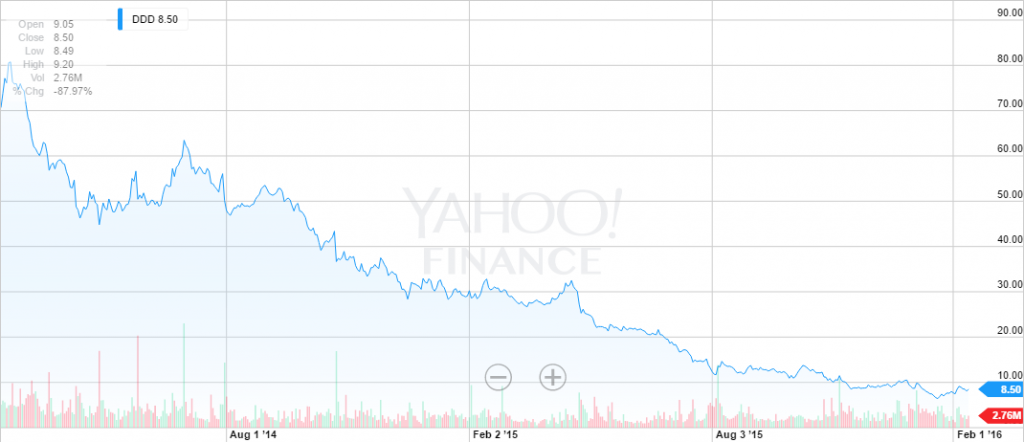3D Systems (NYSE: DDD) had its share price drop to one-tenth of its reported value over two years. After an attempt to become a major player in consumer 3D printing and a spree of acquisitions, 6 months ago the company decided on a major shift in strategy.

Refocus on the core professional market
3D Systems decided to replace Avi Reichental, its former CEO, in November 2015. Since then Cubify.com – 3D systems consumer brand – has been shut down. The new interim CEO, Andy Johnson, has received a clear mandate: to focus resources on professional and industrial applications to foster sustainable growth and improve profitability.
3D Systems has a clean and strong balance sheet
On the 11th of February, 3D Systems announced a further clean up of its balance sheet, reducing its goodwill and intangible assets by a whopping $550M, bringing them to a reasonable $400M. Net assets will reduce to the $700M mark, a level in-line with the current market valuation of the company. 3D Systems has no financial debt. At $150M, the cash position has been stable in the last quarter of 2015. The clean and strong balance sheet lays the foundation for the new management to concentrate on execution and innovation.
Volatility reduced significantly
Share price volatility has reduced significantly since mid-November 2015. 3D Systems’ share price has remained stable in the last 3 months, while the overall markets have lost 15%. Short interest has stabilized at $33M, a very high level. On the 11th of February, 3D Systems published better than expected sales numbers for the fourth quarter of 2015. Revenues at $183M are stable compared to the same quarter of 2014. This number is significantly higher than the $160M expected by the consensus.
Share Price in the 10s by End of 2016
With a clean balance sheet, a clear focus on its sizable high margin core business of large 3D printers, a market valuation at just under one year of annual sales, and a new CEO, the company is well positioned to increase its profitability and, with it, its share price. Contrary to Stratasys, the shareholder structure has remained stable. Current shareholders certainly bet on a turnaround and won’t sell at the current price. With short sellers reducing their position, the share price could well be above $10 by the end of 2016.



